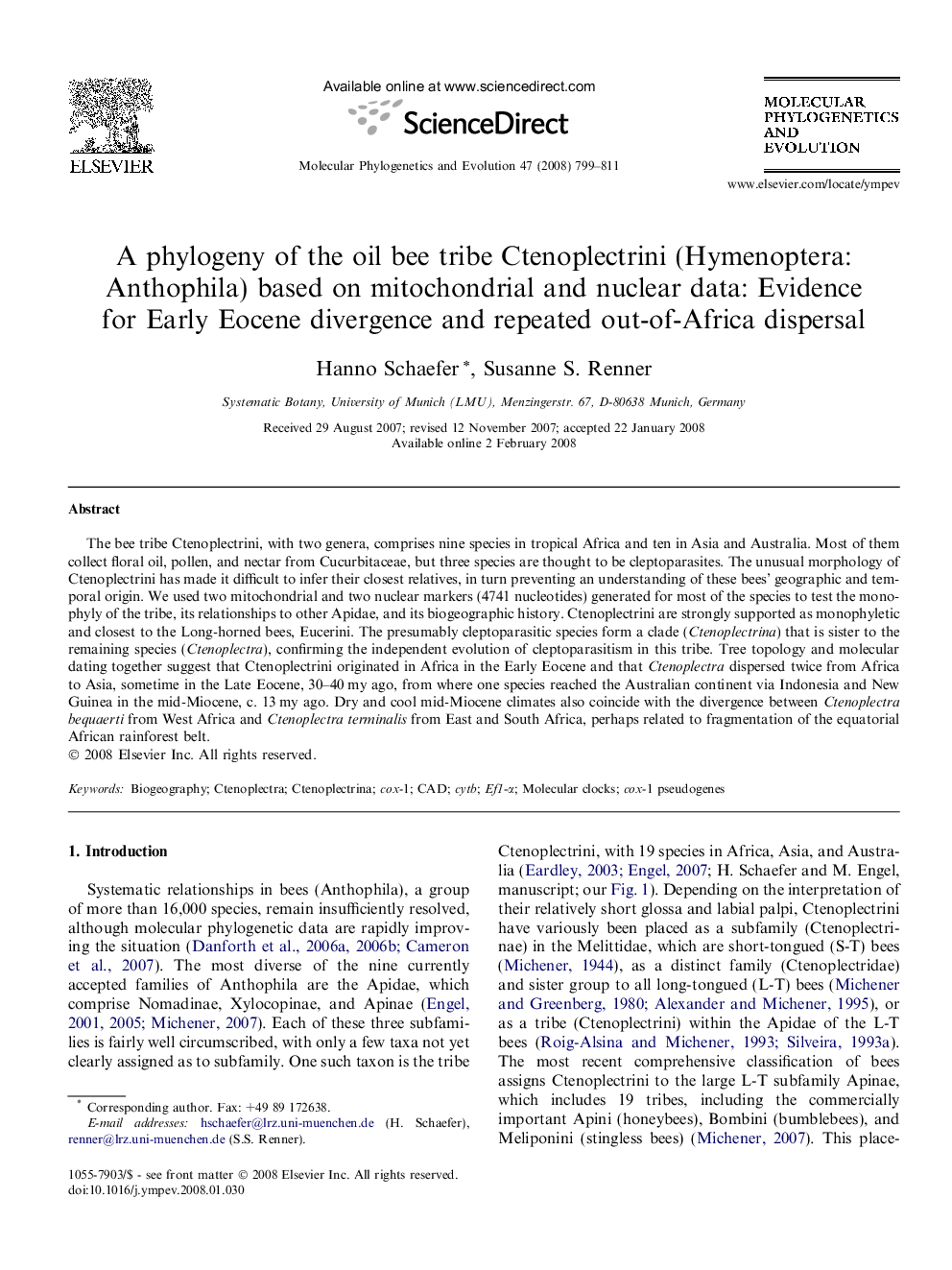| کد مقاله | کد نشریه | سال انتشار | مقاله انگلیسی | نسخه تمام متن |
|---|---|---|---|---|
| 2835376 | 1164340 | 2008 | 13 صفحه PDF | دانلود رایگان |

The bee tribe Ctenoplectrini, with two genera, comprises nine species in tropical Africa and ten in Asia and Australia. Most of them collect floral oil, pollen, and nectar from Cucurbitaceae, but three species are thought to be cleptoparasites. The unusual morphology of Ctenoplectrini has made it difficult to infer their closest relatives, in turn preventing an understanding of these bees’ geographic and temporal origin. We used two mitochondrial and two nuclear markers (4741 nucleotides) generated for most of the species to test the monophyly of the tribe, its relationships to other Apidae, and its biogeographic history. Ctenoplectrini are strongly supported as monophyletic and closest to the Long-horned bees, Eucerini. The presumably cleptoparasitic species form a clade (Ctenoplectrina) that is sister to the remaining species (Ctenoplectra), confirming the independent evolution of cleptoparasitism in this tribe. Tree topology and molecular dating together suggest that Ctenoplectrini originated in Africa in the Early Eocene and that Ctenoplectra dispersed twice from Africa to Asia, sometime in the Late Eocene, 30–40 my ago, from where one species reached the Australian continent via Indonesia and New Guinea in the mid-Miocene, c. 13 my ago. Dry and cool mid-Miocene climates also coincide with the divergence between Ctenoplectra bequaerti from West Africa and Ctenoplectra terminalis from East and South Africa, perhaps related to fragmentation of the equatorial African rainforest belt.
Journal: Molecular Phylogenetics and Evolution - Volume 47, Issue 2, May 2008, Pages 799–811